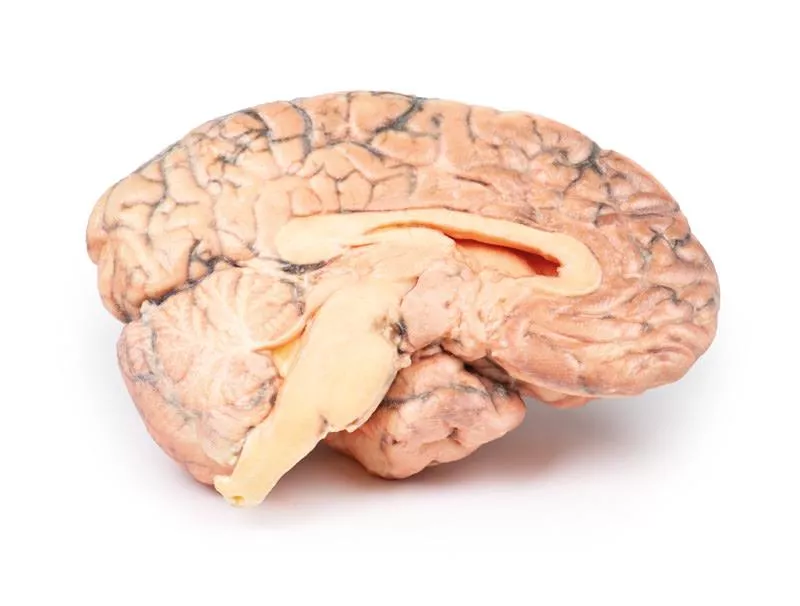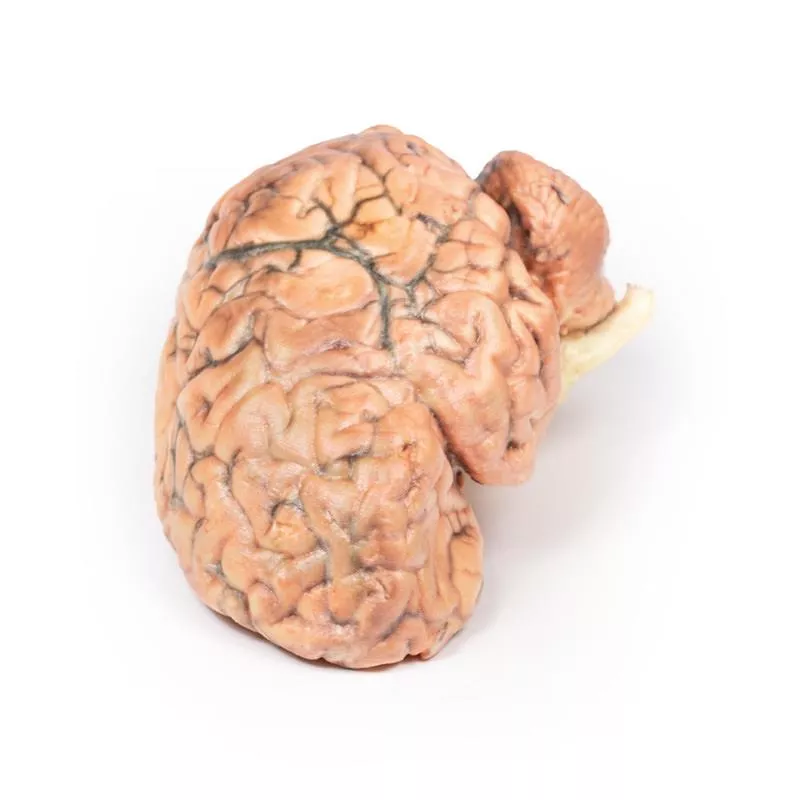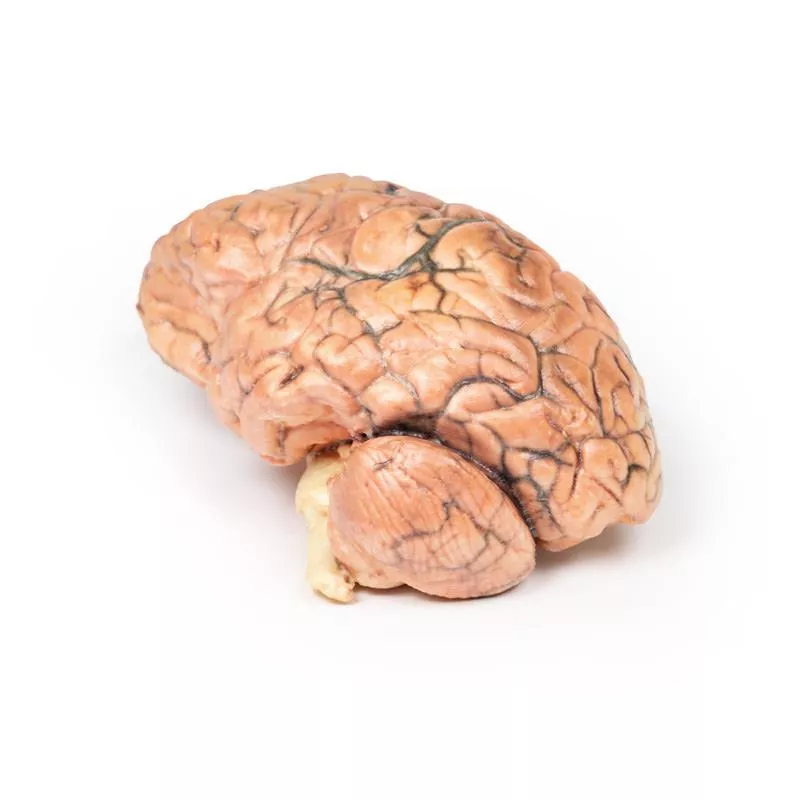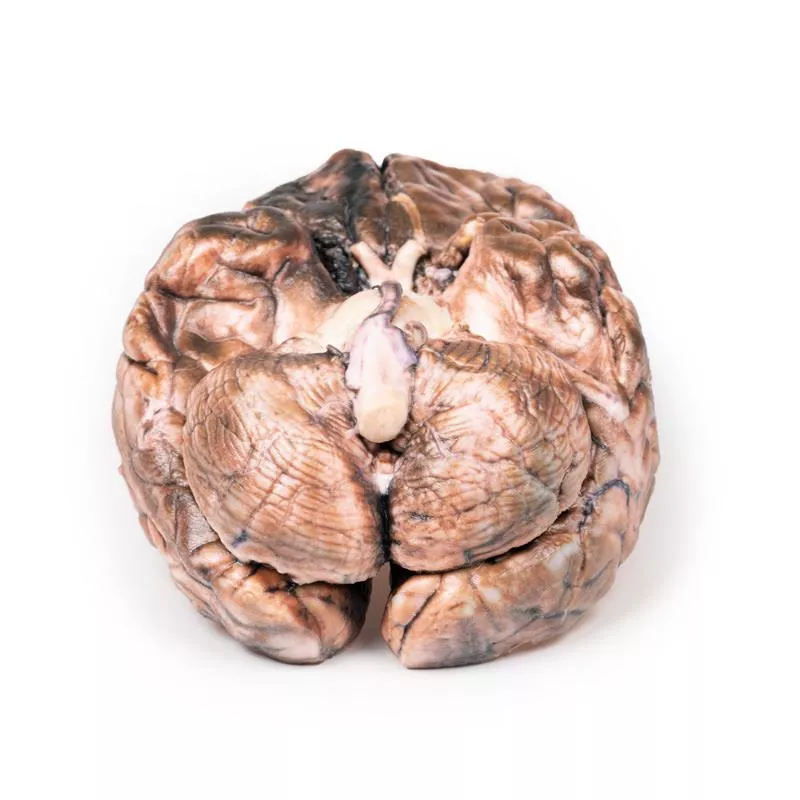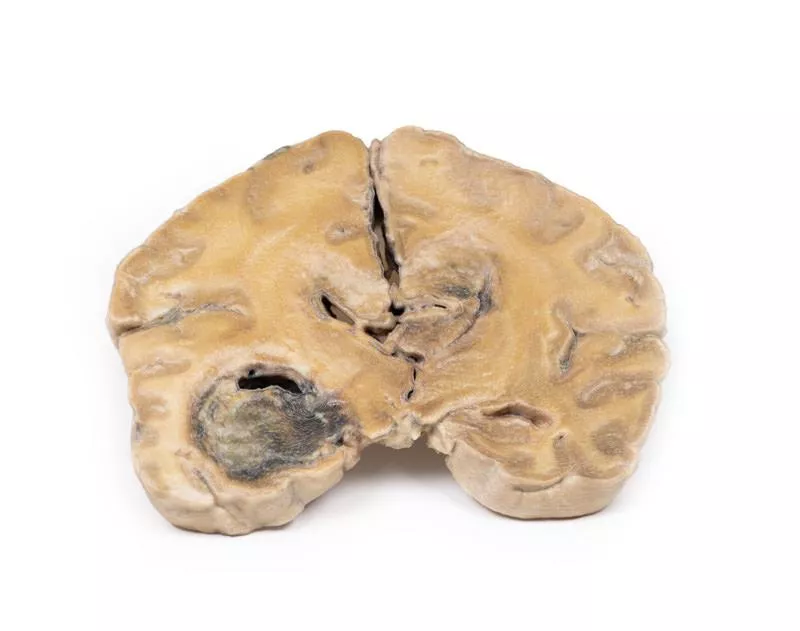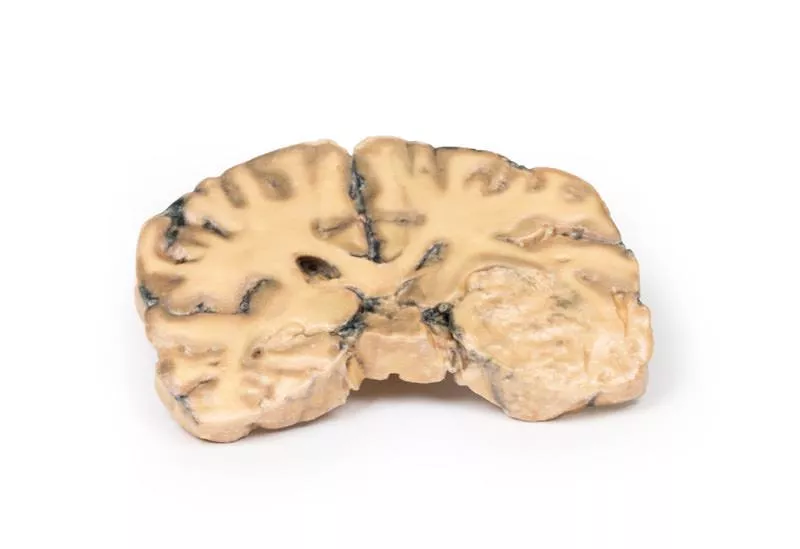Product information "Craniopharyngioma"
Clinical History
A 62-year-old woman presented with disorientation to time, place, and person. Physical examination showed no localized neurological deficits. Imaging revealed a space-occupying lesion in the floor of the 3rd ventricle. During surgery, tissue was removed but complete excision was not possible. Histology confirmed the diagnosis of Craniopharyngioma. Postoperatively, the patient developed complex metabolic disturbances likely originating from the hypothalamus. Her condition worsened gradually, and she died 10 weeks after admission following gastric aspiration.
Pathology
The sagittally sectioned brain shows a pink-grey, ovoid tumour measuring 2.5 x 1.5 cm located in the hypothalamic region. The tumour is encapsulated except at the ventral pole where surgery had removed tissue. The cut surface reveals a microcystic or spongy appearance. It distorts the 3rd ventricle and blocks the Foramen of Munro. The optic chiasm is displaced downward. A previous ventriculo-atrial shunt prevented dilation of the lateral ventricles despite this obstruction.
Further Information
Craniopharyngiomas account for 1-3% of all brain tumours and 5-10% in children, with two age peaks: 5-14 years and 50-75 years. Higher incidence is reported in Japan and parts of Africa. These epithelial tumours arise mainly from the pituitary stalk but can also originate in the sella turcica, optic system, or third ventricle. They often have both solid and cystic components, the cysts containing cholesterol crystals. Two main types exist: adamantinomatous and papillary, differing in histology and genetics though prognostic relevance remains unclear. Treatment involves surgical resection and radiation therapy to address residual disease. Prognosis depends on tumour control and complications from local and endocrine effects.
A 62-year-old woman presented with disorientation to time, place, and person. Physical examination showed no localized neurological deficits. Imaging revealed a space-occupying lesion in the floor of the 3rd ventricle. During surgery, tissue was removed but complete excision was not possible. Histology confirmed the diagnosis of Craniopharyngioma. Postoperatively, the patient developed complex metabolic disturbances likely originating from the hypothalamus. Her condition worsened gradually, and she died 10 weeks after admission following gastric aspiration.
Pathology
The sagittally sectioned brain shows a pink-grey, ovoid tumour measuring 2.5 x 1.5 cm located in the hypothalamic region. The tumour is encapsulated except at the ventral pole where surgery had removed tissue. The cut surface reveals a microcystic or spongy appearance. It distorts the 3rd ventricle and blocks the Foramen of Munro. The optic chiasm is displaced downward. A previous ventriculo-atrial shunt prevented dilation of the lateral ventricles despite this obstruction.
Further Information
Craniopharyngiomas account for 1-3% of all brain tumours and 5-10% in children, with two age peaks: 5-14 years and 50-75 years. Higher incidence is reported in Japan and parts of Africa. These epithelial tumours arise mainly from the pituitary stalk but can also originate in the sella turcica, optic system, or third ventricle. They often have both solid and cystic components, the cysts containing cholesterol crystals. Two main types exist: adamantinomatous and papillary, differing in histology and genetics though prognostic relevance remains unclear. Treatment involves surgical resection and radiation therapy to address residual disease. Prognosis depends on tumour control and complications from local and endocrine effects.
Erler-Zimmer
Erler-Zimmer GmbH & Co.KG
Hauptstrasse 27
77886 Lauf
Germany
info@erler-zimmer.de
Achtung! Medizinisches Ausbildungsmaterial, kein Spielzeug. Nicht geeignet für Personen unter 14 Jahren.
Attention! Medical training material, not a toy. Not suitable for persons under 14 years of age.



















